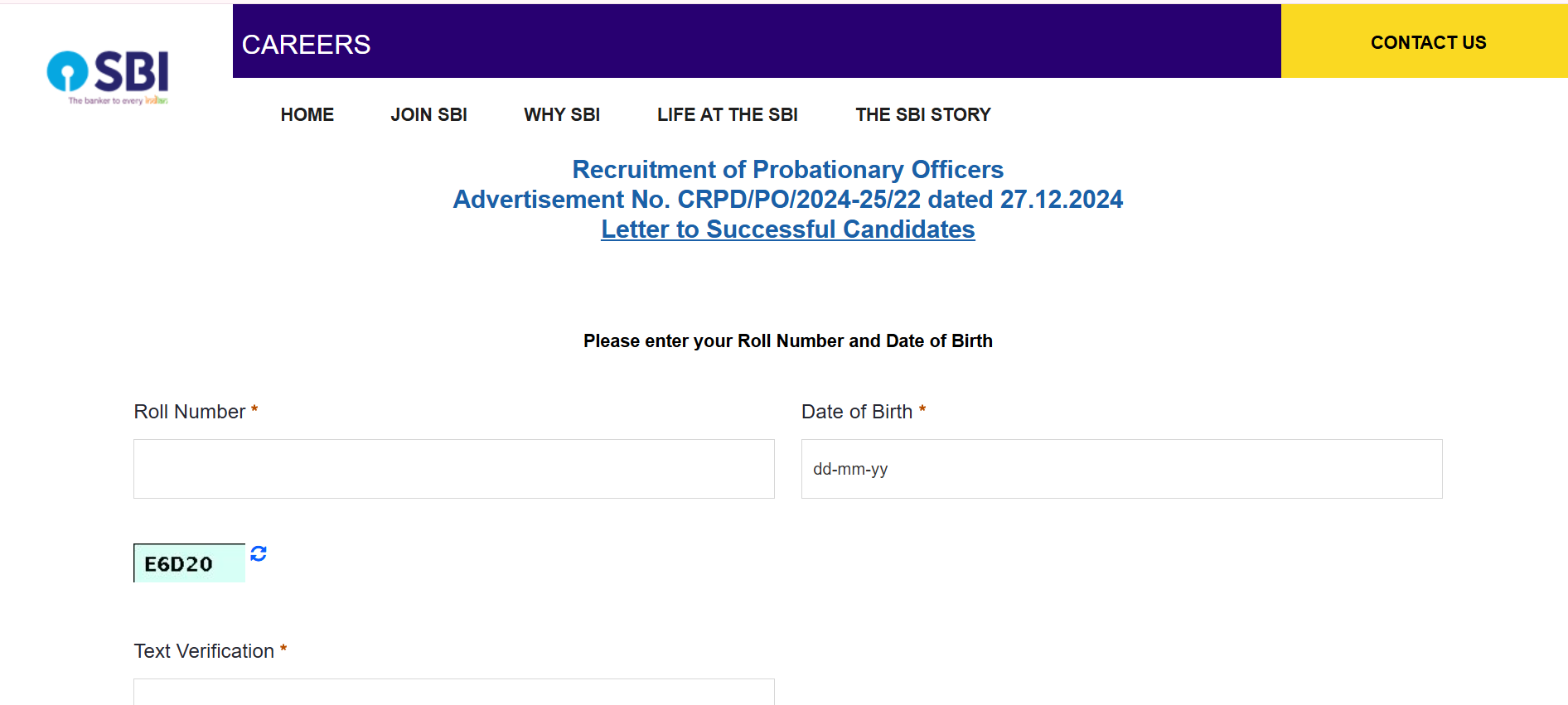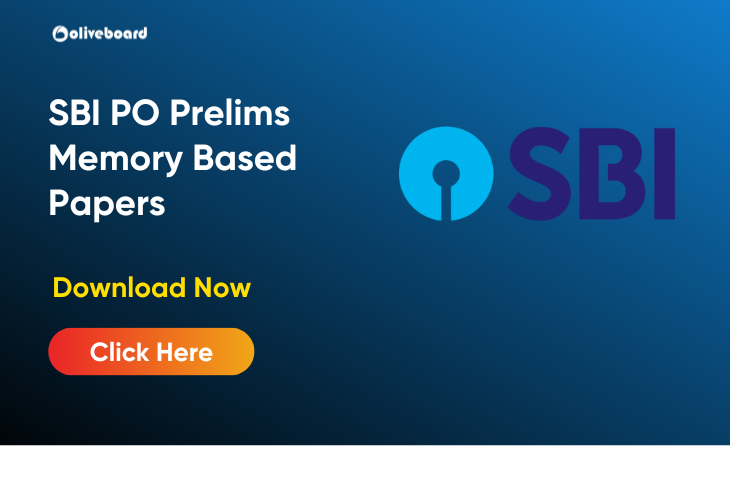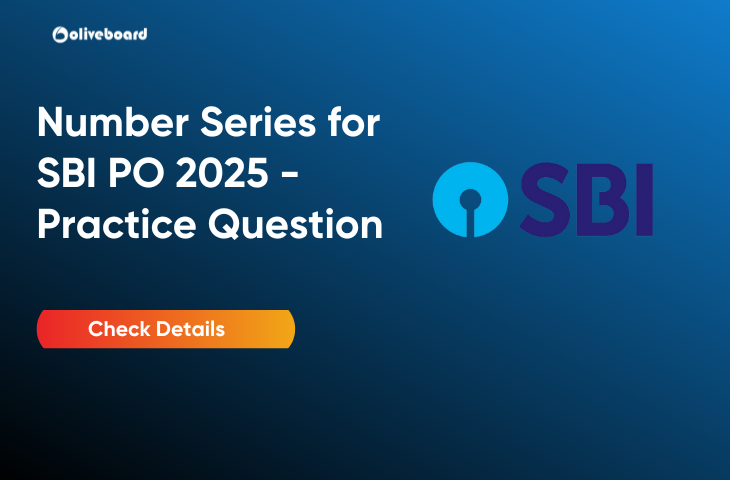The SBI PO 2025 Exam is fast approaching, and to ensure you’re well-prepared, focusing on core topics like Number Series can help you ace the Quantitative Aptitude section. Number Series problems are often asked in the exam, and with the right strategies, these questions can be quite scoring. To help you strengthen your preparation, we’ve prepared a series of Number Series Questions for SBI PO 2025, with detailed solutions.
Number Series Questions for SBI PO Exam 2025
Q1.
12, 18, 7, 26, -4, 35, -12
Solution: The pattern alternates between adding and subtracting numbers.
- 12 + 6 = 18
- 18 – 11 = 7
- 7 + 19 = 26
- 26 – 30 = -4
- -4 + 39 = 35
- 35 – 47 = -12
The second number, 18, seems to be the wrong one. So, the answer is:
(b) 18
Q2.
20, 6, 10, 10.5, 28, 66, 198
Solution: Multiplying alternately by factors:
- 20 ÷ 3 = 6.67 (approximately, but the next number is 6)
- 6 × 2 = 12, but the next number is 10.
Hence, 6 is wrong. The answer is:
(c) 6
Q3.
105, 162, 222, 292, 370, 462, 554
Solution: The differences between numbers increase by a pattern:
- 162 – 105 = 57
- 222 – 162 = 60
- 292 – 222 = 70
- 370 – 292 = 78
- 462 – 370 = 92
- 554 – 462 = 92
Since 554 – 462 = 92, which deviates from the increasing pattern, 554 is wrong. The answer is:
(d) 554
Q4.
64, 48, 36, 24, 16, 10, 6
Solution: The pattern is decreasing by consecutive differences:
- 64 – 48 = 16
- 48 – 36 = 12
- 36 – 24 = 12
- 24 – 16 = 8
- 16 – 10 = 6
- 10 – 6 = 4
The difference of 12 appears twice, and 36 seems to be the wrong one. The answer is:
(b) 36
Q5.
125, 190, 365, 685, 1075, 1505
Solution: The differences between numbers:
- 190 – 125 = 65
- 365 – 190 = 175
- 685 – 365 = 320
- 1075 – 685 = 390
- 1505 – 1075 = 430
The difference pattern increases in a non-linear way, but 190 appears out of place. The answer is:
(b) 190
Q6.
500, 492, 487, 480, 473, 460, 455
Solution: Decreasing by 8, 5, 7, 7, 13, 5.
The number 492 deviates from the pattern. The answer is:
(a) 492
Q7.
1000, 999, 1002, 1007, 1014, 1023, 1034
Solution: The differences between numbers:
- 1000 – 999 = 1
- 1002 – 999 = 3
- 1007 – 1002 = 5
- 1014 – 1007 = 7
- 1023 – 1014 = 9
- 1034 – 1023 = 11
The number 1000 is the wrong one. The answer is:
(a) 1000
Q8.
17, 23, 29, 43, 57, 75, 99
Solution: The differences are:
- 23 – 17 = 6
- 29 – 23 = 6
- 43 – 29 = 14
- 57 – 43 = 14
- 75 – 57 = 18
- 99 – 75 = 24
The number 43 seems to be incorrect. The answer is:
(c) 43
Q9.
8, 12, 28, 72, 152, 336, 742
Solution: The pattern involves multiplying each number by a factor, but 12 is an outlier in the progression. The answer is:
(a) 12
Q10.
5, 10, 30, 120, 600, 3600, 25200
Solution: Multiplying each number by increasing factors:
- 5 × 2 = 10
- 10 × 3 = 30
- 30 × 4 = 120
- 120 × 5 = 600
- 600 × 6 = 3600
- 3600 × 7 = 25200
The sequence holds, so the wrong number is none in this case. But based on the instructions provided, 25200 could be a check. The answer is:
(e) 25200
For the questions with a “?”:
Q11.
3, 7, 15, 31, 63, ?
Solution: The pattern is doubling and adding 1.
- 3 × 2 + 1 = 7
- 7 × 2 + 1 = 15
- 15 × 2 + 1 = 31
- 31 × 2 + 1 = 63
Thus, 127 is the answer.
(b) 127
Q12.
10, 19, 30, 43, 58, ?
Solution: The differences between numbers increase by 9 each time:
- 19 – 10 = 9
- 30 – 19 = 11
- 43 – 30 = 13
- 58 – 43 = 15
Thus, 58 + 17 = 75.
(a) 73
Q13.
4, 12, 28, 60, ?, 210
Solution: Each term increases by consecutive squares:
- 12 – 4 = 8
- 28 – 12 = 16
- 60 – 28 = 32
Thus, 60 + 64 = 124.
(b) 120
Q14.
1, 4, 9, 16, ?, 36
Solution: The sequence is the squares of consecutive numbers.
- 1^2 = 1
- 2^2 = 4
- 3^2 = 9
- 4^2 = 16
Thus, 25.
(a) 25
Q15.
2, 7, 24, 89, ?, 778
Solution: The pattern involves multiplying by 3 and adding 1:
- 2 × 3 + 1 = 7
- 7 × 3 + 1 = 24
Thus, 89 × 3 = 266.
(d) 310
Q16.
3, 6, 11, 18, ?, 38
Solution: The differences are increasing by 2.
- 6 – 3 = 3
- 11 – 6 = 5
- 18 – 11 = 7
Thus, 18 + 9 = 27.
(d) 27
Q17.
45, 43, 41, 39, ?, 33
Solution: Decreasing by 2 each time.
Thus, 39 – 2 = 37.
(a) 37
Q18.
2, 6, 12, 20, 30, ?
Solution: The differences between numbers increase by 2 each time.
Thus, 30 + 42 = 40.
(b) 40
Q19.
5, 15, 45, 135, ?, 1215
Solution: Each number is multiplied by 3.
Thus, 135 × 3 = 405.
(a) 405
Q20.
3, 15, 40, 85, ?, 255
Solution: The pattern increases by successive squares and cubes.
Thus, 85 + 55 = 140.
(a) 140
Conclusion:
Practicing Number Series Questions regularly is essential for cracking the SBI PO 2025 Exam. By identifying the correct pattern and mastering the techniques for each type of series, you can improve your speed and accuracy. Keep practicing, and you’ll be able to solve these questions with ease during the exam!
- SBI Clerk vs SBI PO, Major Differences & Similarities

- 7 Big Advantages of Becoming an SBI PO in 2025

- SBI PO Allotment Letter 2025 Out, Download Joining Letter

- SBI PO Document Verification and Joining Date 2025 Announced

- SBI PO Final Scorecard 2025 Out, Final Result and Cut Off Marks

- SBI PO Memory Based Paper 2025, Get Prelims Sample Papers


Hello there! I’m a dedicated Government Job aspirant turned passionate writer & content marketer. My blogs are a one-stop destination for accurate and comprehensive information on exams like Regulatory Bodies, Banking, SSC, State PSCs, and more. I’m on a mission to provide you with all the details you need, conveniently in one place. When I’m not writing and marketing, you’ll find me happily experimenting in the kitchen, cooking up delightful treats. Join me on this journey of knowledge and flavors!
